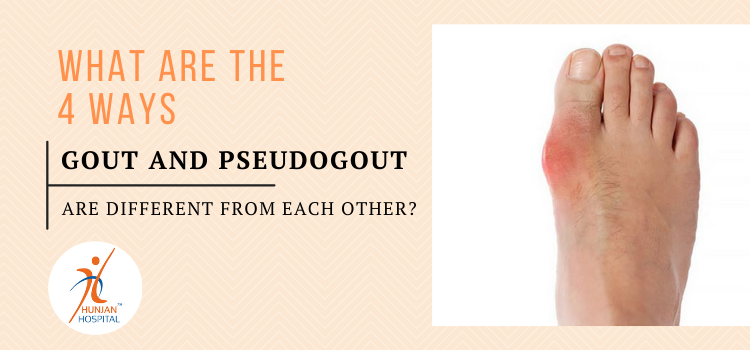What are the 4 ways gout and pseudogout are different from each other?

Both Pseudogout and gout can lead to swelling, joint pain, and redness. This is the reason, it is difficult to tell apart both the conditions. It is important to visit the best Orthopaedic Hospital in Ludhiana to get your condition diagnosed, treated, and prevent flare-ups. Getting the treatment on time will prevent permanent joint damage. In case your ortho-related condition has reached the point that your daily life is getting affected then you need to undergo spine surgery in Ludhiana. In this blog, our focus is to tell you how to differentiate between gout and pseudogout.
-
- Joint gets affected
Gout affects only one joint, but on the other hand pseudogout affects around 1 to 4 joints. The location in which it flare-up will also be different.
-
Gout Pseudogout Gout affects the instep, heel, ankle, knee, or big toe.
Pseudogout affects the wrist, knee, or large knuckles of the hand.
In half of the cases, first-time gout attacks the big toe joint. In the case of women, the knee is the first joint to get affected.
In this case, the big toe is rarely affected. Your spine, shoulder, and hip may get affected.
-
- Causes
Be it gout or pseudogout, both the conditions are caused by microscopic crystals which are present in the joint and it leads to inflammation which can turn out to be painful. Crystals are of different types.
|
Gout |
Pseudogout |
|
Gout is caused due to monosodium urate crystals. These are also referred to as uric acid crystals. |
Pseudogout is caused due to calcium pyrophosphate dihydrate crystals. These are also referred to as CPP crystals (calcium pyrophosphate crystals). |
Important Note
Urate crystals or CPP crystals are not experienced by every individual in their joints. Even the research does not make it clear why these crystals lead to excessive pain in some cases.
-
- Severity, timing, and duration of pain
Both of these conditions can lead to notable joint pain and even without any warning signs. Moreover, the type of pain, where it occurs, and how long it lasts will be different.
|
Gout |
Pseudogout |
|
Gout pain is more severe in nature |
Pseudogout pain extent is still bearable |
|
Gout pain occurs in the middle of the night. |
Pseudogout pain can occur at any time of the day. |
|
If you do not get the treatment, the symptoms go subside within a few days or weeks. |
Pseudogout episode symptoms will last for a few weeks, days, or months, when you do not get the treatment. |
In both conditions, you must get the treatment otherwise the problem will get worse. Make sure to consult the doctor without any delay.
-
- Tendon involvement
-
- With pseudogout, there is a build-up of calcium deposits in the joints which are affected. Medically, the deposits are referred to as calcifications. It is easy for them through the X-ray as the lines will reach the tendon. There is likely to be pain and inflammation.
-
- People with gout have uric acid crystals in the tendon. The doctor will perform a musculoskeletal ultrasound (imaging test) to check the deposits. If the deposits are too much there will be inflammation, tendon damage, and pain.
Both the conditions can be treated, just make sure that you consult the medical expert and understand how to deal with this condition.
Related Post
Play Safe, Recover Strong: Home Remedies for Minor Sports Injuries and When to See a Doctor
By: Hunjan_Hospital
July 16, 2024
ऑस्टियोपोरोसिस की बीमारी से हो सकती है हड्डियां खोखली, पुरुष भी हो रहे है इस समस्या से शिकार
By: Hunjan_Hospital
July 13, 2024
किन बातों का ध्यान रखने से घुटने हो जाएंगे तंदुरुस्त? जानिए एक्सपर्ट्स द्वारा बताए गए ये टिप्स & ट्रिक्स
By: Hunjan_Hospital
June 29, 2024







